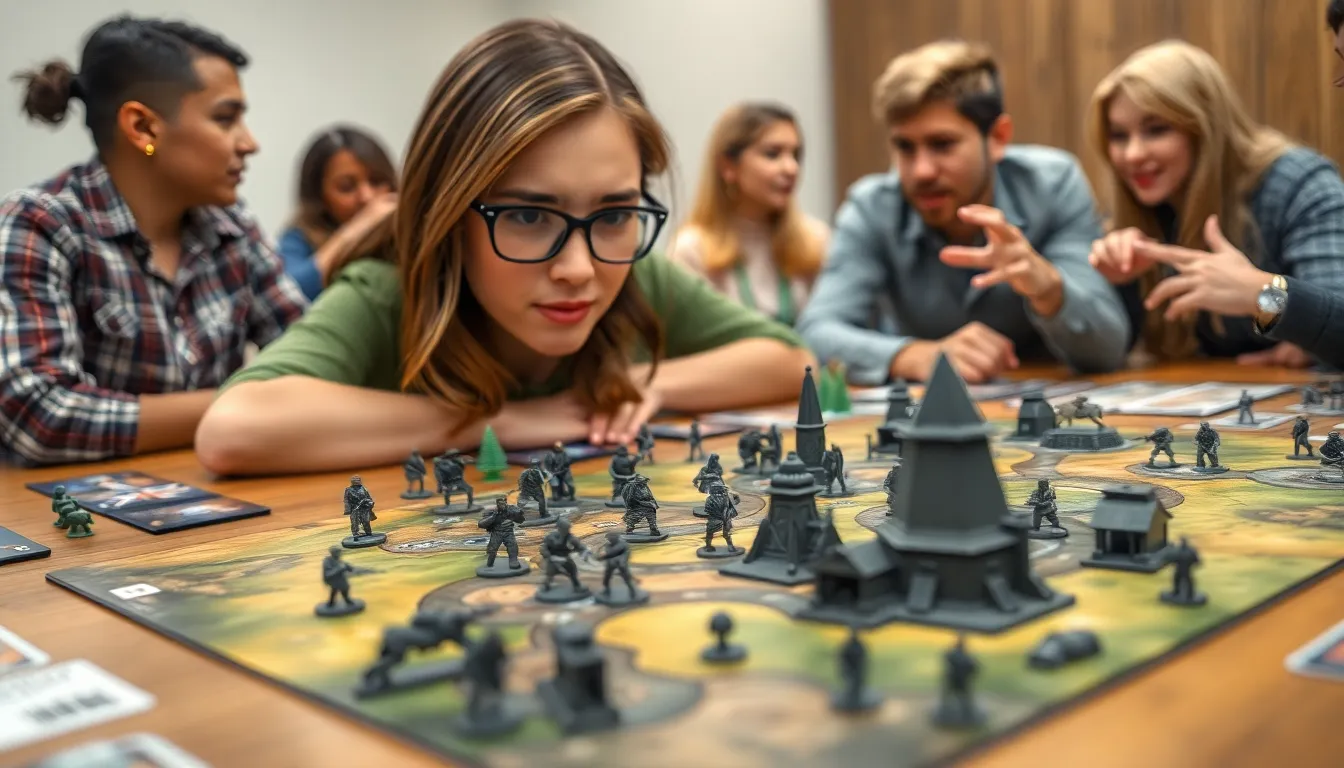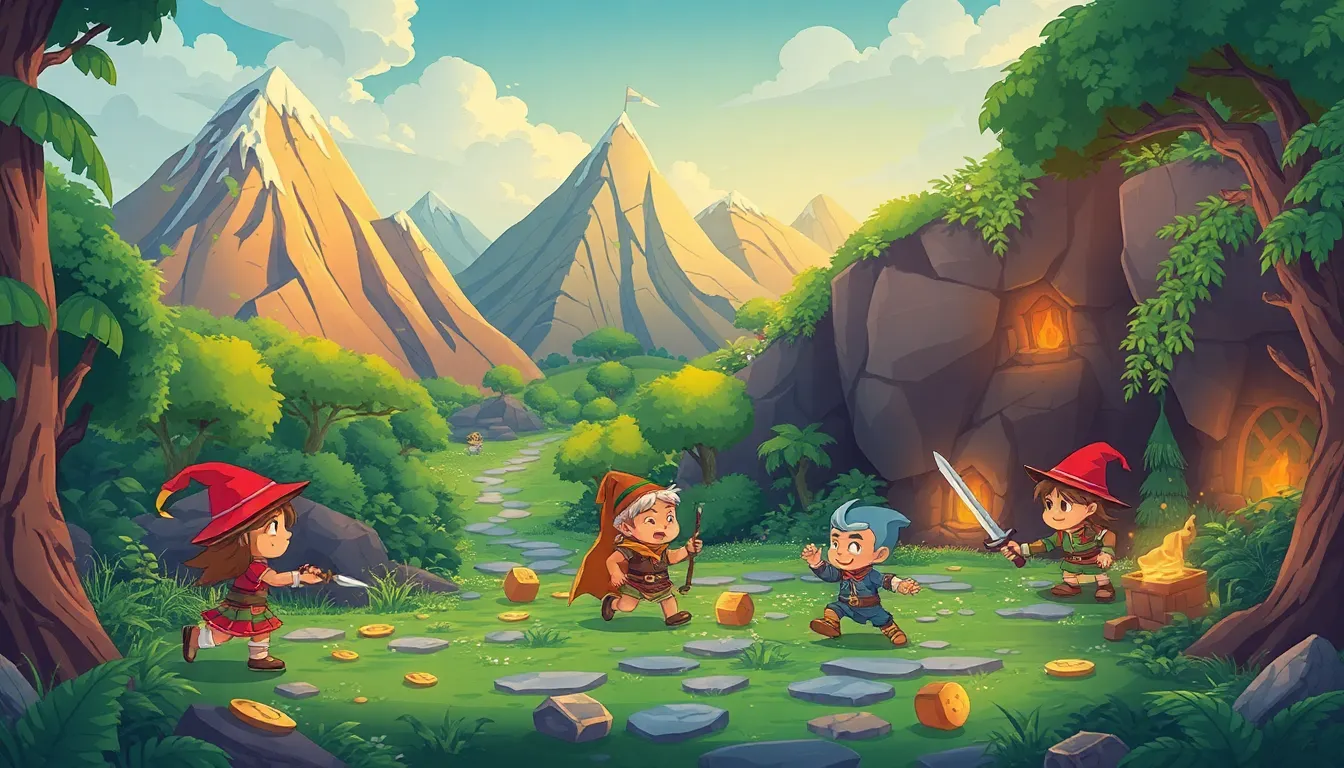In the world of gaming, few things are as exhilarating as a strategy battle. Picture this: armies clash, cunning plans unfold, and the thrill of outsmarting an opponent keeps players on the edge of their seats. It’s not just about brute force; it’s about brains, tactics, and a sprinkle of luck. Whether you’re a seasoned general or a newbie commander, the allure of crafting the perfect strategy is hard to resist.
Table of Contents
ToggleWhat Is Strategy Battle?
Strategy battle involves tactical engagements where players focus on planning and executing maneuvers to outsmart opponents. This style of play showcases skills beyond brute force, appealing to both veterans and newcomers.
Overview of Strategy Battle
Strategy battles emphasize critical thinking and decision-making during gameplay. Players analyze their units, the terrain, and their opponent’s weaknesses to devise winning strategies. These encounters often occur in various formats, from turn-based systems to real-time battles, each requiring unique tactical approaches. Engaging settings and intricate scenarios heighten the gaming experience, making strategy battles a favorite among enthusiasts.
Key Features and Mechanics
Key features of strategy battles include resource management, unit positioning, and action turn timing. Players deploy resources effectively to strengthen their armies while controlling the battlefield layout. Initiating actions at the right moment proves essential for optimal outcomes. Unique abilities or skills often distinguish units, adding depth to the strategies players implement. Understanding these mechanics not only enhances gameplay but fosters an engaging competitive environment.
Types of Strategy Battle Games

Strategy battle games fall into several categories, each offering unique gameplay experiences that challenge players’ tactical acumen. Understanding these types allows players to choose games that fit their preferred style and skill set.
Turn-Based Strategy Battles
Turn-based strategy battles engage players in a structured format where actions occur in distinct turns. Players evaluate the battlefield and plan their moves during their turn, enabling thoughtful decision-making without time pressure. Common examples include games like “XCOM” and “Civilization.” These games require players to manage resources effectively while positioning units strategically to gain an advantage. Success often hinges on anticipating opponents’ actions and adapting strategies accordingly.
Real-Time Strategy Battles
Real-time strategy battles involve simultaneous play, demanding quick thinking and fast reactions. Players issue commands to units while navigating dynamic environments, making split-second decisions crucial. Games such as “Starcraft” and “Age of Empires” exemplify this genre. A player must balance resource gathering, unit production, and combat tactics to succeed. Mastery of unit control and tactical positioning becomes essential as players adapt strategies on the fly in ever-evolving scenarios.
Hybrid Strategy Battles
Hybrid strategy battles combine elements from both turn-based and real-time strategies. These games provide variety in gameplay, appealing to different player preferences. Titles like “Total War” showcase this blend, allowing players to strategize on a large scale before engaging in real-time battles. Players must understand both aspects to excel, balancing meticulous planning with the need for rapid execution during combat. Utilizing both strategic foresight and quick reflexes leads to a comprehensive gaming experience.
Popular Strategy Battle Games
Strategy battle games captivate players with their engaging mechanics and variety. Here are three well-known titles that exemplify different gameplay styles.
XCOM: Enemy Unknown
“XCOM: Enemy Unknown” stands out as a classic turn-based strategy game. Players control soldiers in a tactical combat format where each move counts. Resource management plays a vital role as players must upgrade their base while strategizing during missions. Unit positioning proves crucial as players face off against alien threats. The game emphasizes the importance of planning and adaptability, creating intense, rewarding gameplay moments.
Starcraft II
“Starcraft II” exemplifies the real-time strategy genre. Fast-paced gameplay keeps players on their toes as they gather resources, build armies, and engage in combat. Three distinct factions offer unique units and abilities, requiring players to adapt their tactics accordingly. With strategic depth and competitive multiplayer, “Starcraft II” fosters an engaging community. Notably, players often participate in esports tournaments, highlighting the game’s high-stakes environment.
Total War: Three Kingdoms
“Total War: Three Kingdoms” merges turn-based strategy and real-time battles seamlessly. Players manage empires, engage in diplomacy, and command armies across a rich historical setting. The mixture of strategic planning and execution showcases both meticulous tactics and fast-paced action. Dynamic character interactions add complexity, allowing players to influence outcomes in battle and politics. This hybrid approach appeals to a wide range of strategy enthusiasts.
Strategies for Winning
Winning in strategy battles requires clear tactics and careful planning. Players must adapt to various scenarios, enhancing their chances of success.
Understanding Your Opponent
Gaining insight into an opponent’s strengths and weaknesses enables players to tailor strategies effectively. Analyze patterns in their gameplay to anticipate moves. Observing their unit compositions provides clues about their tactics. Recognizing their preferred strategies helps develop counters. Preparation against specific actions can give a significant edge.
Resource Management
Managing resources wisely is crucial in strategy battles. Prioritizing resource allocation boosts unit effectiveness and overall strategy. Gathering resources efficiently creates opportunities for expansion and development. Balancing offensive and defensive investments ensures adaptability during battles. Players who optimize resource use maintain long-term advantages, allowing for strategic flexibility.
Unit Placement and Movement
Proper unit placement significantly affects combat outcomes. Positioning units on high ground or within cover enhances defensive capabilities. Using flanking maneuvers disrupts opponents’ formations and provides tactical advantages. Keeping distance between units prevents area-of-effect attacks from enemies. Movement strategies can create opportunities for surprise attacks, shifting the tide in a player’s favor.
Strategy battles offer an exhilarating blend of tactical depth and engaging gameplay. Players of all skill levels find themselves captivated by the challenge of outsmarting their opponents through clever planning and execution. The variety of game types—turn-based, real-time, and hybrid—ensures there’s something for everyone.
As players dive into these strategic encounters, they discover that success hinges on understanding their units and the battlefield. With careful resource management and effective unit placement, they can turn the tide in their favor. Embracing the intricacies of strategy battles not only enhances the gaming experience but also cultivates critical thinking skills that extend beyond the screen.




